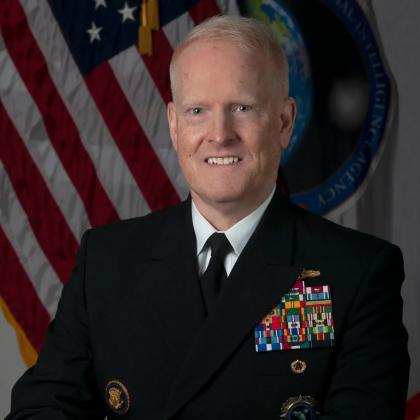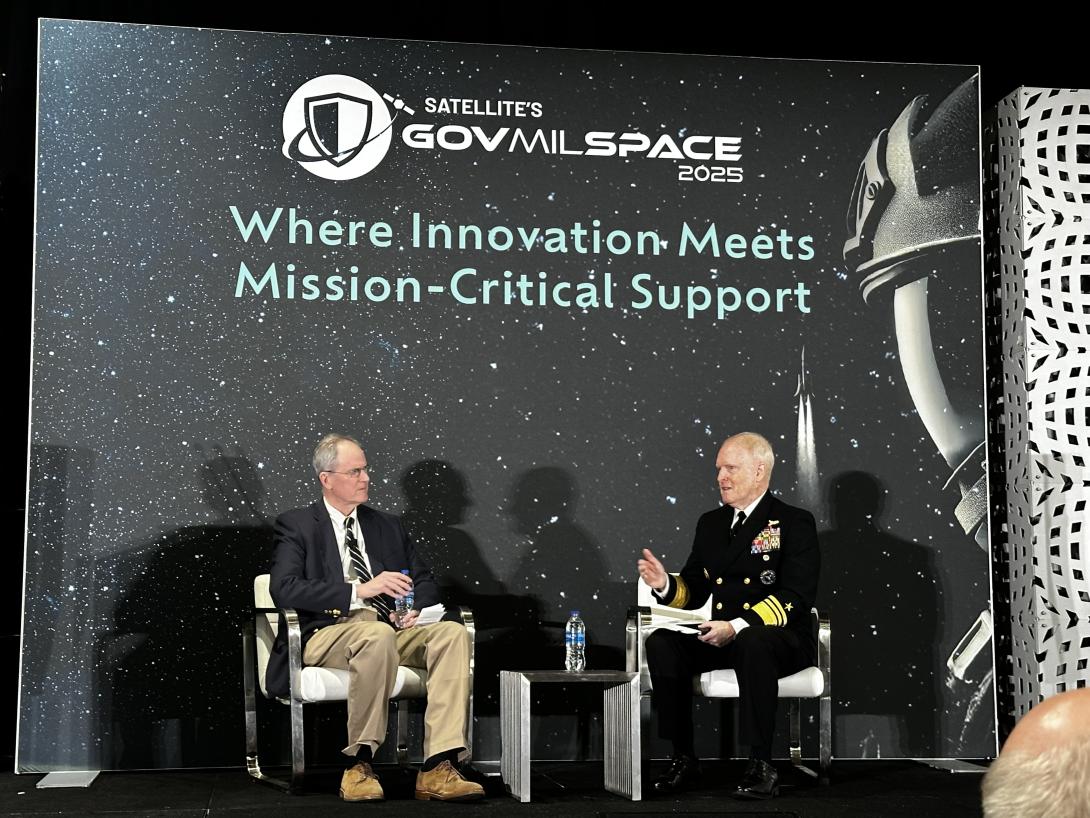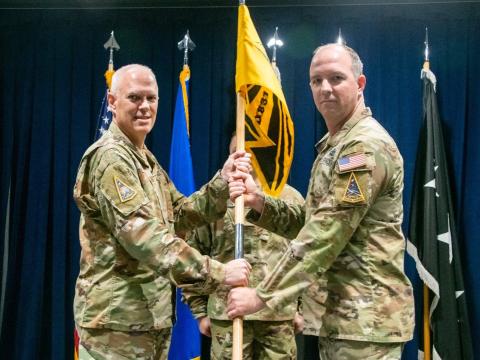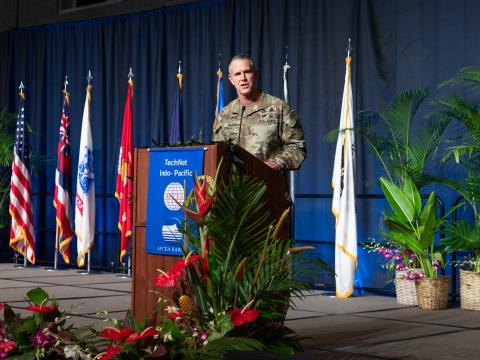Greater Emphasis on AI at NGA
The National Geospatial-Intelligence Agency, led by Vice Adm. Frank Whitworth, USN, is employing even more artificial intelligence (AI) in the collection and analysis of geospatial intelligence (GEOINT).
The director spoke at the GovMilSpace 2025 event that is part of the Satellite 2025 conference, held in Washington, D.C., March 10-13.
“This year, it's got to be AI,” Whitworth emphasized. “We are talking about the true acceleration of AI this year.”
For the last eight or nine years, the National Geospatial-Intelligence Agency (NGA) has been working to implement AI and machine learning, seeing where best to apply human-machine teaming, along with computer vision, data analytics, advanced data visualization and other methods of automation. Early on, the agency worked with the then-director of national intelligence’s Augmenting Intelligence Using Machines and the Department of Defense’s (DoD's) Joint Artificial Intelligence Center, which integrated into DoD’s Chief Digital and Artificial Intelligence Office in 2022.
The NGA is building on this foundation, so much so that “we have themed 2025 to be NGAI,” the director said, playing on the NGA’s name.
And to support the implementation of AI throughout the organization, the agency has added three key roles: a director of AI standards (Mark Munsell); the director of AI programs (Trey Treadwell); and director of AI mission (Ret. Col. Joseph O'Callaghan, USA).
“Trey [Treadwell] is the chief acquisition executive, so it makes sense that as we implement a program executive officer approach, we are making sure that every dollar counts for this program of record, and that it is our chief of capabilities and our acquisition executive that's in charge of AI programs,” Whitworth noted.
O’Callaghan, meanwhile, is stationed at Fort Bragg, North Carolina. Before he retired from the Army, he was in the 18th Airborne as the chief of fires. He will meld his experience overseeing the Corps Joint Fires and Targeting Enterprise and subject matter expert on algorithmic warfare as a defense intelligence senior leader for the NGA, and he will remain at Ft. Bragg.
“When you have a single pane of glass that combines both an intelligence and an operational pane of glass into one, this ensures that you have situational awareness,” Whitworth explained.
In addition, O’Callaghan was instrumental in the use of Maven. “We decided that it's probably best at this juncture, given all of the work that he had already accomplished and the work he already had at Fort Bragg to go ahead and keep him there.”

We are talking about the true acceleration of AI this year.
The efforts of these officials would be in addition to the agency’s marquee program, NGA Maven, which began in 2017 as the Navy’s Project Maven, as well as the Analytic Services Production Environment for the National System for GEOINT, known as the NGA ASPEN project.
NGA ASPEN is a program of record that began in May 2023 as a five-year modernization effort for intelligence production. According to the agency, “it is meant to address the near tripling of GEOINT data coming to NGA’s analysts.”
And as Whitworth notes, “both of those have been going well.”
Lastly, the director noted that the NGA is not immune to the turmoil of the Department of Government Efficiency, or DOGE, efforts to cut the federal workforce, Whitworth said.
The director sees the NGA staff as incredible professionals who are not only meeting their daily mission operational needs but also rising past the uncertainty of employment.
“While we might be in a period of transition, they are handling all of this professionally,” he stated. “I'm really proud of the fact that if you went to the daily ‘ops and intel’ update today, it would be exactly the same as it would have been a week ago, a month ago, two months ago. And as leaders, we are just doing our best to be very communicative and make sure that they know everything we know.”




Comments